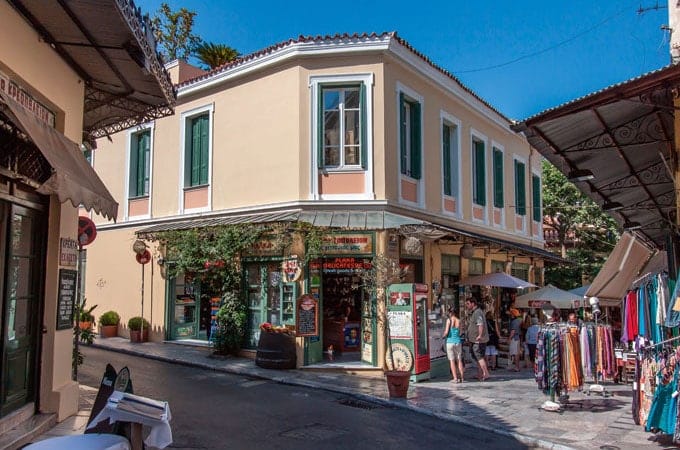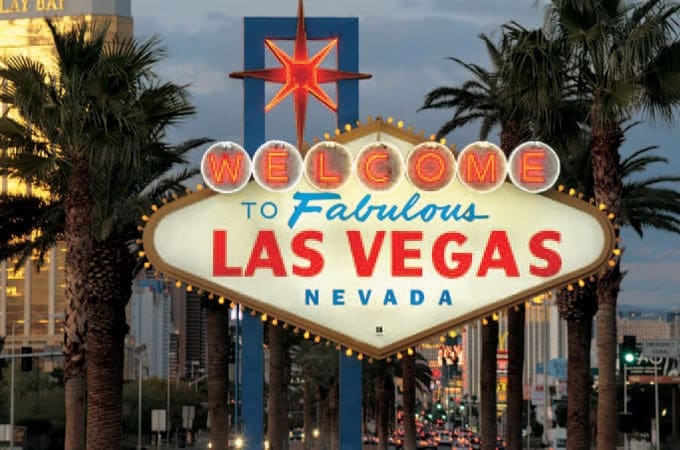Germany’s landscape is dotted with an astonishing collection of castles, making it a utopia for anyone who loves history and culture. With around 25,000 castles scattered across the country, each one offers its own unique piece of history and beauty. From the breathtaking halls of Neuschwanstein Castle, which feels like stepping into a fairy tale, to the picturesque Burg Eltz nestled among lush forests, and grand palaces with intricate Rococo and Baroque designs to ancient fortresses dramatically perched on hillsides, every castle in Germany has its own story.
You might wonder how one country can have so many castles. The answer lies in Germany’s rich history. Its borders with nine neighbouring nations and its division into various states during the Holy Roman Empire meant that fortifications were crucial. Castles served not only as residences but also as important strongholds. Some stand proudly on islands in the Rhine River, while others invite hikers to explore scenic trails that merge natural beauty with historical discovery.
Here, we highlight twelve must-visit castles that showcase Germany’s diverse heritage and stunning vistas.
Hohenschwangau Castle

Nestled in the Bavarian Alps, Hohenschwangau Castle was constructed by King Maximilian II of Bavaria in the mid-19th century. Designed by Italian architect Domenik Quaglio, the castle is renowned for its elaborate murals depicting Germanic sagas and its picturesque gardens. The interior reflects a Romantic-era taste, with ornate rooms and historical artifacts.
Good to Know: Hohenschwangau can be visited in conjunction with Neuschwanstein Castle (below). The summer cable car from Tegelberg offers breathtaking views of both castles and the Alps. Expect a moderate uphill walk to the castle entrance.
How to Get There: Hohenschwangau Castle is accessible from Füssen, a short train ride from Munich (approximately 2 hours). From Füssen, you can take a bus or taxi to Hohenschwangau. The castle is a 15-minute walk from the nearest parking area, or you can take a horse-drawn carriage.
Neuschwanstein Castle

Perhaps the most famous of all German castles, Neuschwanstein Castle was commissioned by King Ludwig II of Bavaria. Built between 1869 and 1886, this fairy-tale castle inspired Disney’s Sleeping Beauty Castle. Its intricate neo-Romanesque architecture and opulent interiors, including the lavish Throne Room, are set against the dramatic backdrop of the Bavarian Alps.
Good to Know: Due to ongoing renovations, access may be limited to certain areas. For the best experience, visit during the off-season (November-April) and explore nearby attractions like the Marienbrücke Bridge for stunning panoramic views.
How to Get There: Like Hohenschwangau, Neuschwanstein is best reached from Füssen. From there, take a bus or taxi to the castle area. You can also walk or take a horse-drawn carriage from the parking lot.
Related article: 5 Fairytale Castles in Ireland & Scotland You Can Stay Overnight at!
Hohenzollern Castle

Perched on Mount Hohenzollern in the Swabian Alps, Hohenzollern Castle exemplifies Gothic Revival architecture. Though initially built in the 11th century, the current structure, dating from the mid-19th century, represents the third reconstruction of the castle over eight centuries. Commissioned by King Frederick William IV of Prussia, this neo-Gothic fortress is one of Germany’s most visited castles. It houses a notable letter from George Washington, in which the former American president commends Baron von Steuben, a descendant of the Hohenzollern family, for his service during the American Revolutionary War. The castle also boasts elegant rooms, a historical armoury, and sweeping views of the surrounding countryside.
Good to Know: Don’t miss the historical armoury, which showcases medieval weaponry and armour collections. The castle’s elegant rooms and panoramic views of the Swabian Alps are also highlights. For those interested in exploring the area further, the Swabian Alps are perfect for hiking and outdoor activities, with trails offering stunning natural scenery. Nearby, you can visit the charming town of Bisingen or the picturesque village of Albstadt, both offering local culture and dining options.
How to Get There: Hohenzollern Castle is located in southwest Germany near Stuttgart. To reach Hohenzollern Castle by car, take Highway A 81 towards Stuttgart–Singen and exit at Empfingen. Follow B463 towards Balingen, then continue on B27 towards Hechingen. In Hechingen, follow the signs to Burg Hohenzollern. This road will lead you directly through the forest to the castle’s parking lot, where ample parking is available for both cars and buses. From the parking lot, you can either walk up the increasingly steep path to the castle entrance, which takes about 25 minutes or take the shuttle bus available at the parking lot.
If you’re travelling by train, arrive at Hechingen station and transfer to a bus that will take you to the castle’s parking lot.
Marksburg Castle

Perched above the Rhine River near Braubach, Marksburg Castle is a remarkably well-preserved medieval fortress. Dating back to the 11th century, it is celebrated for its formidable defensive features, including thick walls, a moat, and a drawbridge. Unique among Rhine hill castles, Marksburg has never been destroyed, retaining its historic character through continuous habitation for over 700 years.
Situated on the Rhine’s right bank, upstream from its confluence with the Mosel, the castle dominates the landscape from its elevated position. Its slender keep rises above the surrounding courts and ramparts, offering a striking silhouette. Inside, the castle’s interiors are thoughtfully furnished to evoke medieval life, including a grand hall, a chapel, and living quarters, providing a fascinating glimpse into centuries of history.
Good to Know: The castle offers guided tours in multiple languages and features a medieval kitchen, with traditional cooking demonstrations occasionally held. Nearby, Stolzenfels Castle is a UNESCO World Heritage site worth exploring.
How to Get There: Marksburg Castle is accessible from Koblenz, which is well-connected by train from major cities like Cologne and Frankfurt (approximately 1 hour). From Koblenz, you can take a local train to Braubach. While a scenic boat ride from Koblenz to Braubach is an option, it’s less frequent than the train. From Braubach station, it’s a short walk to the castle, though the path is uphill.
Eltz Castle

Set amidst the verdant hills by the Moselle River, Eltz Castle is a striking example of medieval architecture that has stood proudly for over 850 years. Its complex array of towers and turrets reflects a rich history and the evolving tastes of its inhabitants.
The castle has weathered numerous conflicts with only minor damage, retaining much of its 15th-century charm when it housed three noble families. Remarkably, it remains in the hands of the Eltz family, who have preserved it through 33 generations. Eltz Castle’s iconic silhouette also graced the 500-mark banknote from 1961 to 1995, highlighting its significance in German heritage.
Good to Know: Eltz Castle is accessible via a picturesque walk through the forest, which usually takes about 20-30 minutes. Its well-preserved interiors, including the knight’s hall and treasure chamber, are open to visitors and offer a fascinating look into medieval life.
How to Get There: Eltz Castle is located near Moselkern, near Münstermaifeld. You can take a train from Koblenz to Moselkern, which takes approximately 20-30 minutes. From Moselkern, a picturesque 20-30-minute walk through the forest will lead you to the castle.
Schwerin Castle

Situated on an island in Lake Schwerin, Schwerin Castle is a breathtaking example of Romantic architecture, drawing inspiration from French Renaissance châteaux. Erected between 1845 and 1857, the castle features elaborate turrets, intricate interiors, and vast gardens. This Neo-Renaissance structure is uniquely positioned and entirely surrounded by water, with access granted via a single bridge linking it to the mainland.
Although the first records of Schwerin date back to 793, when the site was used as a military fort, the castle as we know it today was only completed in 1857; once the residence of Grand Dukes and Prussian officers, it now serves as the Mecklenburg-Vorpommern state parliament. Additionally, Schwerin Castle houses a museum, a porcelain collection, and a concert venue, reflecting its transformation into a cultural and governmental hub.
Good to Know: The castle’s gardens and park are ideal for leisurely strolls. Boat cruises on Lake Schwerin provide picturesque views of the castle and its surroundings. The city of Schwerin also offers cultural attractions and charming cafes.
How to Get There: Schwerin Castle is located in Schwerin and is accessible by train from Hamburg (approximately 1.5 hours) or Berlin (about 2 hours). From the train station, it is a short walk or bus ride to the castle.
Burg Rabenstein

Burg Rabenstein, nestled amid Bavaria’s dense and verdant forests, is a truly enchanting castle with a timeless, fairy-tale allure. Constructed in the 12th century, this medieval stronghold has been meticulously preserved, giving visitors an evocative glimpse into its illustrious history and architectural grandeur.
The castle’s imposing turrets, and tranquil surroundings make it an exquisite representation of a romantic fortress harmoniously integrated into the stunning Bavarian landscape. Its compelling historical portrayal and breathtaking setting render Burg Rabenstein an indispensable destination for those interested in the region’s rich heritage and natural splendour.
Good to Know: Burg Rabenstein is a picturesque destination and a unique place to stay. The castle offers a selection of charming rooms and suites, allowing visitors to experience medieval ambience combined with modern comforts. Guests can fully immerse themselves in the royal experience and enjoy the scenic beauty of Franconian Switzerland right from their accommodation.
The castle also features a restaurant serving local and seasonal cuisine, enhancing your stay with a taste of regional specialties. Guided tours provide insights into its rich history and architecture.
How to Get There: Burg Rabenstein is located near the town of Pottenstein in Franconian Switzerland. To reach the castle, drive from Nuremberg via the A9 motorway, exiting at Pottenstein. From there, follow local roads to the castle. The drive from Nuremberg takes approximately 45 minutes.
Public transport options include regional trains to the nearby station in Pottenstein, followed by a short taxi ride or local bus to the castle. The castle is a short walk from the parking area, providing a pleasant approach through the surrounding woods.
Moyland Castle

Located in the Lower Rhine region near Bedburg-Hau, Moyland Castle is a neo-Gothic gem originally built in the 13th century and extensively reconstructed in the 19th century. The castle is renowned for its impressive collection of works by German artist Joseph Beuys and other modern and contemporary art. Its gardens are equally captivating, featuring a diverse array of sculptures and plant species.
Good to Know: Moyland Castle regularly features temporary art exhibitions and cultural events throughout the year. Its gardens are a highlight, showcasing a diverse herb garden with over 350 plant varieties, an extensive collection of 530 different types of hydrangeas, and approximately 70 artworks displayed across the grounds. The castle’s art collection is particularly notable for its works by German artist Erwin Heerich and Basque sculptor Eduardo Chillida.
How to Get There: Moyland Castle is accessible from Kleve by train, which takes about 30 minutes. Take a local bus or taxi from Kleve to Bedburg-Hau, followed by a short trip to the castle.
Lichtenstein Castle

Perched dramatically on a cliff in the Swabian Jura, Lichtenstein Castle is often called the “Fairy Tale Castle” because of its enchanting setting and Gothic Revival architecture. Completed in 1842, the castle boasts a striking armoury, a grand knight’s hall, and sweeping views of the Echaz Valley. Visitors can take a 30-minute guided tour of this privately-owned Gothic gem, exploring the first and second floors. The tour highlights include the armoury, a chapel with 15th and 16th-century stained glass, and the impressive Knight’s Hall, famous for its beautifully painted wooden ceiling.
Good to Know: To reach Lichtenstein Castle, you’ll need to either tackle a steep climb or hop on a shuttle bus. Autumn is the most magical time to visit when the Echaz Valley explodes in brilliant shades of red, orange, and yellow. The castle is closed during December and January, and it’s open only on weekends in November, February, and March. While you’re there, explore the surrounding area—it’s a hiker’s paradise with trails leading to breathtaking viewpoints and nearby natural wonders.
How to Get There: Lichtenstein Castle is accessible from the town of Lichtenstein, which can be reached by train from Stuttgart (about 1 hour). From the train station, take a local bus or taxi to the castle entrance.
Pfalzgrafenstein Castle

Perched on the small Falkenau Island in the Rhine River, Pfalzgrafenstein Castle was originally built in 1326 as a toll station. Those who refused to pay were often imprisoned in the castle’s dungeon.
About 800 years ago, Pfalzgrafenstein Island had only a single tower. During this time, Count Palatine Konrad was furious when his daughter Agnes fell in love with Henry the Lion’s son despite their families’ feud. He imprisoned Agnes and her mother in the tower to stop the union, but Henry reached them by boat and married Agnes with a priest’s help. When Konrad discovered the marriage and his grandchild, he was initially shocked but eventually pleased, especially when Emperor Barbarossa celebrated the union and forgave him. The tower on Pfalzgrafenstein Island remains a historical symbol of the marriage that reconciled the feuding families.
Over the centuries, the structure has been enhanced with features such as a pentagonal tower, a baroque tower top, and decorative turrets.
Good to Know: While exploring Pfalzgrafenstein, you can enjoy views of the vineyard-covered hills and spot the nearby 13th-century Gutenfels Castle. For a broader exploration, consider hiking the Rhine Castles Trail, which begins at the Mouse Tower in Bingen and extends 120 miles north to Koblen, taking you past approximately 20 castles and through the renowned wine regions of the Middle Rhine, Ahr, and Moselle.
How to Get There: You can reach Pfalzgrafenstein Castle via a ferry from the nearby town of Kaub, weather and river conditions permitting. Kaub, located along the Rhine River, is easily accessible by train from major cities such as Koblenz and Wiesbaden. Once you arrive at Kaub station, it’s a short walk to the ferry terminal, where you can catch the boat to the castle.
Burg Bentheim Castle

Located in the town of Bad Bentheim, this medieval fortress dates back to the 11th century. Bentheim Castle is renowned for its well-preserved Romanesque architecture, including its impressive defensive walls and towers. The castle’s museum offers a glimpse into its history and the lives of its former inhabitants.
Good to Know: The castle is set amidst beautiful parkland, ideal for leisurely walks and picnics. It also hosts various events throughout the year, including historical reenactments and local festivals.
How to Get There: Bad Bentheim Castle is easily accessible from the town of Bad Bentheim, which is reachable by train from Münster (about 30 minutes) or Groningen (about 1 hour). From the train station, it is a short walk or bus ride to the castle.
Burgruine Thurant

Perched on a hill overlooking the Moselle River, Burgruine Thurant is a charming ruin from the 12th century, offering stunning views of the scenic landscape. The castle was built on Roman foundations, with its origins tracing back to 1197. It gained prominence between 1246 and 1248, during a conflict between the archbishops of Cologne and Trier, which led to the castle being divided by a wall into two parts. The peace treaty signed on 17 September 1248 is one of the oldest surviving documents in the German language.
Today, visitors can explore fascinating exhibits, including medieval torture devices, and ascend the watchtower via a ladder. English-language leaflets are available. The ruins include impressive defensive walls, towers, and a great hall.
Good to Know: The castle is particularly popular among hikers and wine lovers, as the nearby vineyards offer wine-tasting opportunities. The castle’s ruins provide excellent photo opportunities and scenic views of the river.
How to Get There: Burgruine Thurant is accessible from the town of Alken and is reachable by train from Koblenz (about 20 minutes). It’s a short walk or a taxi ride from Alken to the castle.
These twelve historic castles in Germany are like time machines, whisking you back to the medieval era with their grandeur and charm. Each one offers something unique—whether it’s exploring lavish interiors steeped in history or marvelling at panoramic views of lush landscapes. Whether you’re passionate about history or architecture or just eager to be intrigued by these ancient fortresses, you’ll find plenty to spark your imagination and awe when you add some of Germany’s beautiful castles to your travel itinerary.




